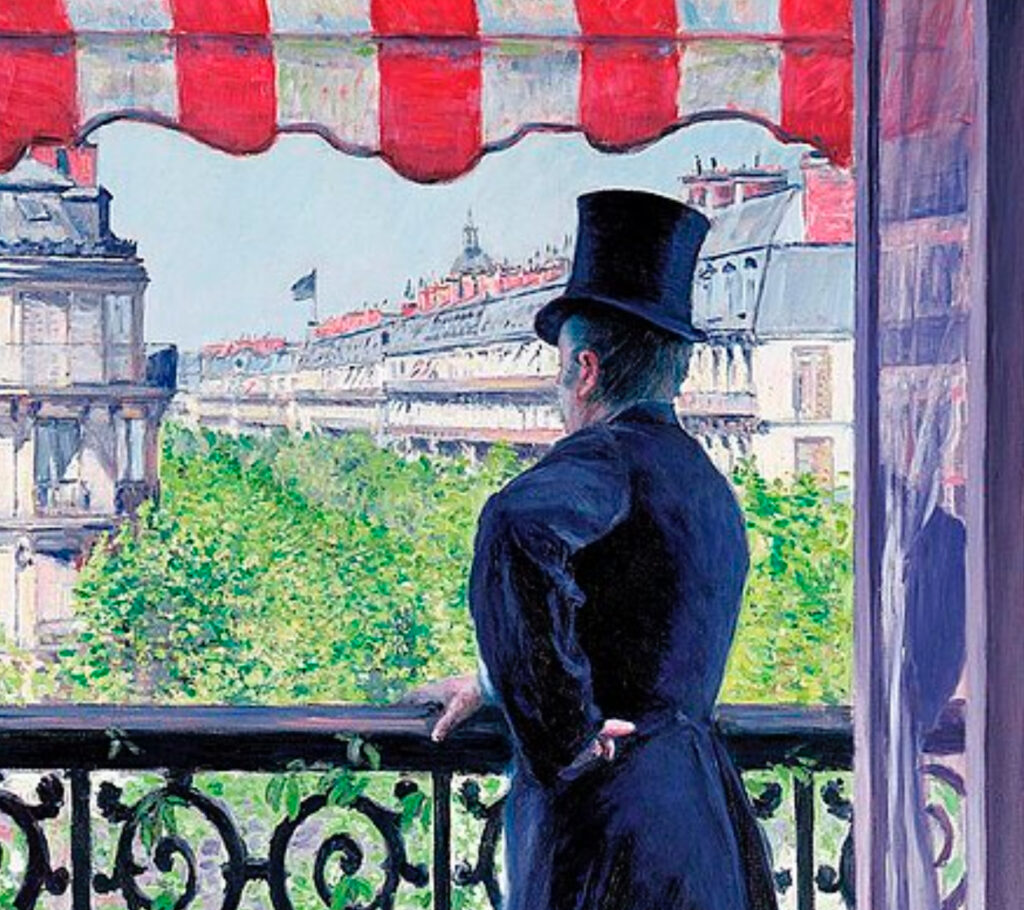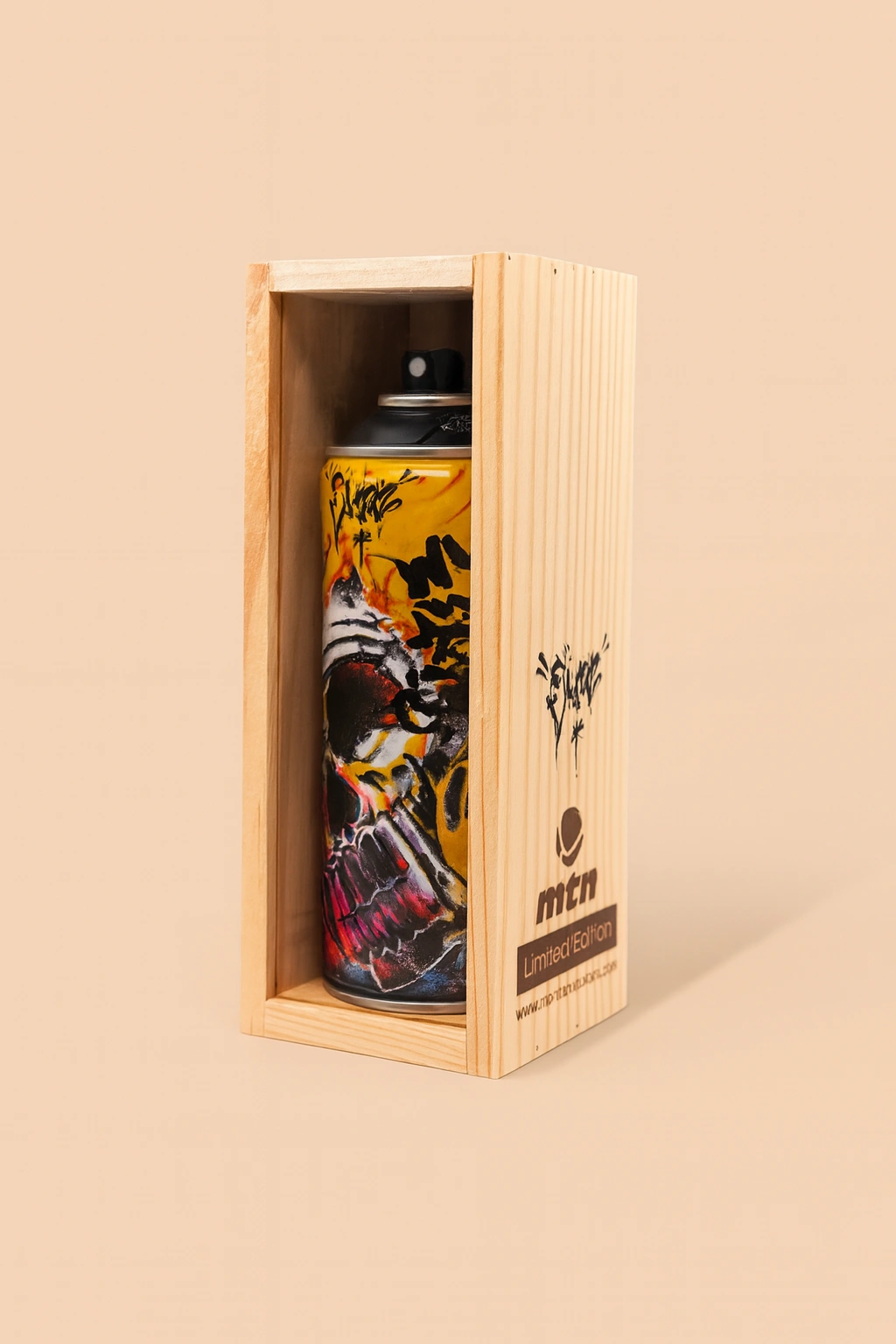Gustave Caillebotte’s painting The Man on the Balcony, Boulevard Haussmann (1880) is a striking example of urban modernity and psychological introspection in 19th-century art. Unlike the more well-known Impressionists such as Claude Monet and Pierre-Auguste Renoir, Caillebotte’s style blended elements of Impressionism with an almost photographic realism and perspective-driven composition. This particular painting, held in a private collection, captures a solitary figure standing on a Haussmann-style balcony, overlooking the modernized streets of Paris.
As one of the key painters of urban Impressionism, Caillebotte’s work offers a unique perspective on modern life, architecture, and human solitude. His use of perspective, lighting, and psychological depth in The Man on the Balcony, Boulevard Haussmann positions the piece as a fascinating study of both the city and the individual within it. This essay will explore the historical context of the painting, its composition, themes, and Caillebotte’s approach to modernity, offering a deep analysis of how the artwork reflects the social and artistic transformations of the late 19th century.
Historical and Cultural Context: The Haussmannization of Paris
Caillebotte painted The Man on the Balcony in 1880, a period when Paris was undergoing a dramatic urban transformation. Under the direction of Baron Georges-Eugène Haussmann, the city had been redesigned with wide boulevards, modern apartment buildings, and expansive public spaces, replacing the narrow, medieval streets of old Paris. This modernization effort, initiated by Napoleon III, was intended to improve the city’s infrastructure, sanitation, and traffic flow. However, it also symbolized the social and economic shift towards a more industrialized and bourgeois society.
Caillebotte, himself a wealthy man, was both an admirer and critic of Haussmannization. While he celebrated the elegance and order of the new Parisian landscape, his paintings often depict a sense of isolation and detachment experienced by urban dwellers. In The Man on the Balcony, he presents a single figure observing the city from an elevated position—separate from the street life below, suggesting a contemplative or even alienated stance toward modern urban existence.
Composition and Perspective: A Modern Viewpoint
Caillebotte was deeply influenced by photography, and this painting reflects his mastery of perspective and framing. The composition of The Man on the Balcony is carefully structured:
• The man is positioned slightly off-center, standing on an iron-railed balcony that creates a visual barrier between him and the city.
• The balcony railing serves as a compositional device, guiding the viewer’s eye toward the grand Haussmannian boulevard below.
• The perspective is angled, creating a sense of depth and movement, almost as if the viewer is standing behind the man, sharing his gaze over Paris.
This careful arrangement mirrors the modern individual’s experience of the city—not fully immersed in the bustling streets but observing from a private, almost voyeuristic standpoint. The city unfolds before him like a stage, emphasizing the urban spectacle that Haussmann had designed Paris to be.
Color and Light: Impressionist Influences with Realist Execution
Caillebotte, though associated with the Impressionists, painted in a style that was often more solid and defined than the loose brushstrokes characteristic of Monet or Renoir. However, he shared their fascination with light and atmospheric conditions.
In The Man on the Balcony:
• The cool blue and gray tones of the cityscape contrast with the darker clothing of the man, emphasizing his presence.
• The light suggests a clear day, with sunlight subtly illuminating the architecture and streets below.
• The color palette is sophisticated yet subdued, reflecting the mood of quiet contemplation rather than the joyous, sun-drenched atmosphere often found in Impressionist landscapes.
This interplay of light and shadow contributes to the painting’s sense of realism and emotional depth. While the city appears vibrant and modern, the man’s dark silhouette suggests a sense of detachment—a theme that runs throughout Caillebotte’s work.
The Figure on the Balcony: Who is He?
Unlike many of Caillebotte’s other paintings, which depict groups of people engaged in social activity (Paris Street; Rainy Day, 1877), The Man on the Balcony focuses on a solitary figure. This anonymity allows for multiple interpretations:
The Modern Bourgeois Gentleman: The man is dressed in formal attire, suggesting he belongs to the upper-middle class, the very group that benefitted most from Haussmann’s urban redesign.
A Symbol of Isolation: Despite standing in a city full of life, he is alone, separated from the urban crowd below. This hints at themes of modern alienation, a common motif in 19th-century literature and art.
An Observer Rather Than a Participant: His stance suggests detached contemplation, emphasizing the new role of the urban flâneur—a figure who watches, rather than engages in city life.
This sense of introspective modernity aligns with the writings of Baudelaire, who described the flâneur as someone who moves through the city as an observer, absorbing the spectacle of modern life without fully engaging in it.
Comparison to Other Works by Caillebotte
Caillebotte frequently explored themes of perspective, isolation, and urban modernity in his paintings. Some notable comparisons include:
Paris Street; Rainy Day (1877)
• Depicts pedestrians in a newly modernized Paris, with a similar use of perspective.
• Unlike The Man on the Balcony, here the figures are engaged in the flow of the city, whereas the balcony figure remains detached.
Young Man at His Window (1875)
• Shows a man gazing out at the city, reflecting a similar sense of urban detachment and contemplation.
• This earlier work presents the viewer from behind, emphasizing the voyeuristic aspect of modernity.
A Balcony, Boulevard Haussmann (1880)
• Another balcony scene, but with a more impressionistic touch, showcasing Caillebotte’s ongoing fascination with views from above.
In all of these works, Caillebotte uses vantage points, framing, and lighting to explore the relationship between the individual and the rapidly changing cityscape.
The Psychological and Social Themes of the Painting
Beyond its architectural beauty, The Man on the Balcony conveys deep social and psychological themes that resonate with both 19th-century and contemporary audiences:
Urban Isolation in a Modernizing World
• The painting reflects the paradox of modern urban life—surrounded by people yet emotionally distant.
• The theme of alienation is one that prefigures the existential concerns of the 20th century.
The Role of the Flâneur
• The man on the balcony acts as a passive observer, embodying the idea of the flâneur, as described by Baudelaire.
• His detached position suggests both privilege and loneliness, a condition of modern bourgeois life.
The Changing Landscape of Paris
• Haussmann’s renovation of Paris transformed the city into a place of spectacle, order, and consumer culture.
• The painting captures both the grandeur and the estrangement that these changes brought.
The Legacy of The Man on the Balcony, Boulevard Haussmann
Gustave Caillebotte’s The Man on the Balcony, Boulevard Haussmann (1880) remains an important work for its artistic innovation, psychological depth, and historical significance. As both an impressionist and realist, Caillebotte bridges the gap between capturing fleeting moments of light and exploring the enduring emotions of modern urban life.
By placing his subject in an observational role, Caillebotte invites viewers to reflect on their own relationship with the city, prompting questions about individuality, detachment, and the meaning of modernity. Whether seen as an ode to Haussmann’s Paris or a critique of its alienating effects, this painting remains a profound and timeless exploration of the human experience in an ever-changing world.
No comments yet.








